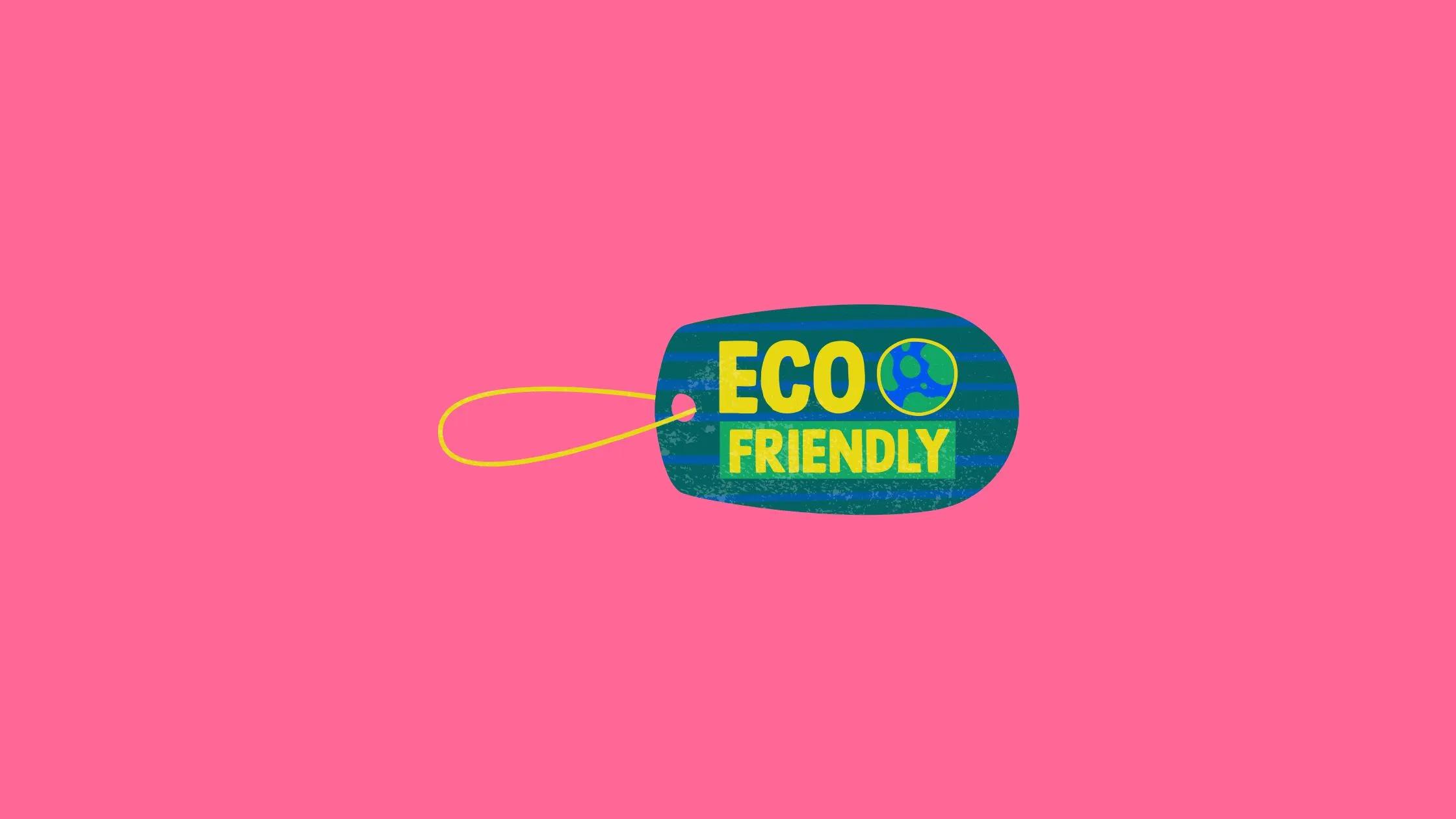
In the competitive world of ecommerce, the product detail page (PDP) is a crucial element that directly impacts conversions, user experience, and customer satisfaction. But what is a PDP in ecommerce, and why is it so important? This guide dives deep into the purpose, best practices, and examples of effective product detail pages to help you optimize your ecommerce strategy.
A product detail page (PDP) or product description page (PDP) is a dedicated webpage in an ecommerce store that provides comprehensive information about a specific product. Its primary purpose is to help potential buyers make informed purchasing decisions by showcasing detailed descriptions, images, specifications, pricing, and calls-to-action (CTAs). In simple terms, the PDP acts as the final touchpoint before a user decides to add an item to their cart or make a purchase. It is a virtual equivalent of examining a product in a physical store.
The PDP serves as a critical element in the customer journey and directly influences:
To create a high-performing PDP, certain elements must be present:
Images provide a visual representation of the product. Include multiple angles, zoom functionality, and lifestyle photos to enhance user engagement.
Understanding how to write a description of a product is essential. Use clear, concise language that highlights:
Example: For a running shoe, emphasize comfort, durability, and performance benefits like "ideal for marathon runners seeking optimal support."
Include technical details like size, weight, materials, and compatibility to address user queries and reduce returns.
Clearly display the product’s price, discounts, and stock availability. Transparency here builds trust.
Effective CTAs like “Add to Cart” or “Buy Now” should be prominently placed and visually distinct.
Social proof influences buying decisions. Include authentic customer reviews, ratings, and testimonials.
Clearly state shipping timelines, costs, and return policies to eliminate buyer doubts.
Suggest complementary or similar products to encourage upselling and cross-selling.
With the rise of mobile commerce, ensure your PDP is fully responsive and easy to navigate on smaller screens.
Anticipate user questions and provide all necessary details upfront. A buyer considering a smartphone may look for specs, battery life, and camera quality.
Review successful PDP examples from ecommerce giants like Amazon and Shopify. Notice how they:
To ensure your product detail page ranks well in search results:
Use videos or 360-degree images to give users a comprehensive view of the product. Interactive content increases engagement and reduces bounce rates.
Leverage data to personalize PDP content. Show tailored recommendations based on user preferences or browsing history.
Experiment with different layouts, CTAs, and headlines to determine what resonates best with your audience.
Shopify provides customizable templates and tools to create visually appealing PDPs. Its seamless integration with apps enhances functionality.
As a WordPress plugin, WooCommerce offers flexibility in designing PDPs with various plugins and themes.
BigCommerce supports scalable PDP creation with built-in SEO features and mobile responsiveness.
Magento offers advanced customization options for creating detailed and interactive product pages.
Sangria empowers ecommerce brands to create SEO-optimized product detail pages that drive traffic and boost conversions. Here’s how:
The product detail page (PDP) is the backbone of any successful ecommerce website. By providing detailed information, engaging visuals, and seamless navigation, PDPs help convert visitors into customers. Whether you’re optimizing for search engines or enhancing user experience, following best practices ensures your PDPs stand out in a competitive market.
Platforms like Sangria make it easier than ever to create high-performing, SEO-optimized PDPs that drive results. By focusing on the needs of your audience and implementing proven strategies, you can unlock the full potential of your ecommerce store.

In the dynamic world of ecommerce, landing pages play a pivotal role in driving targeted traffic, engaging users, and converting visitors into customers. For digital marketers, understanding the nuances of these pages—their types, purposes, and best practices—is essential for building a robust ecommerce conversion strategy. In this comprehensive guide, we’ll explore what landing pages are, their differences from a traditional website, and how different types of landing pages serve specific purposes within the ecommerce conversion funnel.
A landing page is a standalone web page created with a single, focused objective: to guide visitors toward completing a specific action. This could range from filling out a form to making a purchase. Unlike standard web pages that provide a broad range of information, landing pages are laser-focused on conversion.
The difference between landing pages and website lies in their design and purpose:
In short, landing pages are streamlined conversion tools, whereas websites provide an all-encompassing brand experience.
Landing pages are essential for:
Landing pages can be tailored to align with the customer’s intent and position in the funnel. Let’s break them down by stage:
Purpose: Drive awareness and educate users about a product or topic.
Search Intent: Informational queries like “How to choose the right running shoes.”
Best Practices:
Example: A sportswear brand creating a blog post titled “Top 10 Running Shoes for 2025” with links to specific product pages.
Purpose: Showcase a curated list of products based on category or theme.
Search Intent: Navigational queries like “Men’s winter jackets.”
Best Practices:
Example: An ecommerce platform like Shopify’s pre-designed templates for creating visually appealing collection pages.
Purpose: Help users compare options and build trust through testimonials or reviews.
Search Intent: Transactional queries like “Best smartphones under $500.”
Best Practices:
Example: A page comparing different noise-cancelling headphones, linking to individual product pages for more details.
Purpose: Drive direct purchases by providing detailed product information.
Search Intent: High-intent queries like “Buy iPhone 15 Pro Max.”
Best Practices:
Example: An electronics retailer featuring an iPhone with detailed specs, customer reviews, and a floating cart for quick checkout.
Purpose: Promote limited-time offers or discounts to drive urgency.
Search Intent: Transactional queries like “Black Friday deals on laptops.”
Best Practices:
Example: A fashion brand running a flash sale with a dedicated landing page showcasing discounted items.
Dynamic Landing Pages:
Static Landing Pages:
Dynamic pages are more versatile and effective for scaling efforts, while static pages are better suited for focused, unchanging campaigns.
Landing pages offer several advantages for ecommerce businesses:
Sangria empowers brands to create high-performing landing pages that boost organic traffic and optimize the ecommerce conversion funnel:
Landing pages are a powerful tool for ecommerce brands to engage users, boost conversions, and improve search visibility. By understanding the types of landing pages and aligning them with specific stages of the funnel or user intents, businesses can create targeted campaigns that deliver measurable results.
Platforms like Sangria make it easier to scale these efforts, offering dynamic, SEO-optimized pages that drive organic traffic and streamline the conversion journey. Whether you’re focused on capturing leads or driving sales, investing in high-quality landing pages is a strategic move for sustained ecommerce success.

Landing pages are an essential component of any digital marketing strategy, especially for ecommerce brands aiming to capture leads, boost traffic, and drive conversions. They serve as the first point of contact for many potential customers and are specifically designed to guide visitors toward a single call-to-action (CTA). In this blog, we’ll explore what are landing pages on a website, their key differences from websites, and the various types of landing pages suited for different marketing goals and search intents.
We’ll also provide actionable best practices for creating SEO-optimized landing pages and discuss how Sangria enables brands to create diverse, high-performing pages at scale.
A landing page is a standalone web page designed with a single, focused purpose—usually to convert visitors into leads or customers. Unlike standard website pages, landing pages are tailored to a specific campaign, audience, or action, such as filling out a form, downloading a resource, or purchasing a product.
The difference between landing pages and websites lies in their structure and intent:
Websites: Act as a central hub for your brand, offering multiple pages with comprehensive information about products, services, company details, and more. Websites are designed for exploration and discovery.
Landing Pages: Have a singular focus, tailored for a specific campaign or goal. They minimize distractions by eliminating navigation menus or unrelated links, guiding users toward a specific action.
In short, a website is a multi-purpose entity, whereas a landing page is a conversion-driven tool.
Landing pages serve various purposes based on the marketing funnel and campaign objectives. They are often used for:
Let’s dive into the types of landing pages and the stages of the ecommerce conversion funnel they cater to.
Purpose: Collect visitor information such as email addresses, names, or phone numbers.
Best Suited For: Top-of-the-funnel (TOFU) campaigns targeting users in the awareness stage.
Example Use Case: A D2C skincare brand offering a free ebook on “10 Steps to Glowing Skin” in exchange for an email address.
Purpose: Encourage visitors to click a specific link or CTA, often leading to a product page or sign-up form.
Best Suited For: Middle-of-the-funnel (MOFU) campaigns where users are considering options.
Example Use Case: A fashion retailer showcasing a seasonal collection with a “Shop the Collection” button.
Purpose: Drive direct sales by highlighting product benefits and including CTAs like “Buy Now” or “Add to Cart.”
Best Suited For: Bottom-of-the-funnel (BOFU) campaigns aimed at converting ready-to-buy customers.
Example Use Case: An electronics brand offering a discount on the latest smartphone model with a limited-time offer.
Purpose: Encourage sign-ups for events such as webinars, conferences, or product launches.
Best Suited For: TOFU or MOFU campaigns to engage and educate potential leads.
Example Use Case: A SaaS company hosting a live demo of its platform.
Purpose: Serve as a follow-up after a user completes an action, like filling out a form or making a purchase. They can include additional CTAs, such as subscribing to a newsletter.
Best Suited For: Retention and loyalty-building efforts.
Example Use Case: An ecommerce store providing discount codes after a purchase.
Purpose: Target specific search queries and intents at scale by dynamically generating pages tailored to keywords, locations, or user needs.
Best Suited For: Driving organic traffic and addressing niche search intents.
Example Use Case: A travel site like Expedia creating pages for “Best hotels in Miami for families” or “Affordable flights to New York.”
Sangria empowers ecommerce brands to create high-performing landing pages at scale, tailored to every stage of the funnel:
Understanding the various types of landing pages and their use cases is crucial for crafting effective campaigns. Whether you’re building awareness, driving consideration, or closing sales, landing pages tailored to specific intents and stages of the funnel deliver measurable results.
By implementing best practices for SEO and user experience, and leveraging tools like Sangria, brands can create scalable, high-converting landing pages that boost organic traffic and optimize the ecommerce conversion funnel. Investing in well-designed landing pages isn’t just a marketing tactic—it’s a strategic advantage for long-term success.

In the competitive world of ecommerce, creating personalized and highly relevant experiences for users is no longer optional. Enter multi-variant landing pages: a revolutionary approach that combines scalability, personalization, and SEO optimization to drive traffic and boost conversions. These pages allow brands to address diverse user intents and queries, enhancing the customer journey while improving search visibility.
This guide explores what multi-variant landing pages are, their benefits, and best practices for implementation. We’ll also delve into how platforms like Sangria empower businesses to create these pages at scale.
A multi-variant landing page is a dynamically generated webpage designed to cater to different user intents, preferences, and search queries. By addressing multiple variables—such as location, product features, or user demographics—these pages ensure relevance for a wide range of audience segments.
Unlike static pages, multi-variant programmatic pages leverage automation and data-driven insights to create multiple versions of a landing page. Each variant is tailored to specific keywords, user behaviors, or search queries, making them highly effective for both organic and paid traffic.
Popular platforms like Tripadvisor and Expedia demonstrate the power of multi-variant landing pages:
These multivariate approaches ensure users find what they’re looking for, improving engagement and conversions.
By targeting long-tail keywords and multi-variable search phrases, these pages improve organic visibility. They address specific user intents, making them more likely to rank for niche queries. Additionally, a multi-variant webpage structure allows businesses to:
Personalization is key to modern ecommerce. Multi-variant landing pages enable brands to:
Relevance drives action. By delivering precise information and options, these pages reduce friction in the ecommerce conversion funnel. Tailored content encourages users to:
Consistently addressing user needs through variant landing pages strengthens brand perception. Users are more likely to trust and return to brands that deliver relevant, high-quality experiences. This approach aligns with a strong content marketing e commerce strategy.
Automating the creation of multi-variant programmatic pages reduces the time and effort required to develop landing pages. Brands can achieve:
Creating effective multi-variant landing pages requires a blend of strategy, technology, and creativity. Here are the top practices to follow:
Start by defining the variables that matter most to your audience. These could include:
Tailoring pages to these variables ensures relevance and maximizes engagement.
Scaling multi-variant landing pages manually is impractical. Platforms like Sangria enable businesses to create programmatic SEO landing pages at scale. These pages are:
Long-tail keywords often represent high-intent searches, making them ideal for multivariate marketing. Use tools like Ahrefs or SEMrush to identify niche queries and integrate them into your pages.
A successful multi-variant landing page seamlessly integrates products and calls-to-action. For example:
With the majority of ecommerce traffic coming from mobile devices, ensuring your pages are mobile-friendly is crucial. Test for:
Analyze performance metrics such as bounce rates, time on page, and conversion rates. Use these insights to:
A floating cart simplifies the buying process by allowing users to add items without leaving the page. This reduces dropouts and enhances the overall shopping experience.
For brands aiming to dominate their ecommerce content strategy, Sangria offers a robust solution. Here’s how it stands out:
Multi-variant landing pages represent the next frontier in ecommerce optimization. By addressing diverse user intents and leveraging automation, these pages enhance SEO performance, improve personalization, and drive conversions. For digital marketers, founders, and content teams, adopting a multi-variant programmatic pages strategy is no longer a luxury—it’s a necessity.
Platforms like Sangria make it easier than ever to scale these efforts, empowering brands to create tailored, high-performing landing pages at speed. Whether you’re aiming to capture niche search queries or streamline the customer journey, multi-variant landing pages offer unmatched potential to transform your ecommerce strategy. Hurry, book your demo now!

The evolution of ecommerce has seen brands experimenting with various strategies to bridge the gap between content and commerce. One standout approach that is reshaping the landscape is in-content commerce, a tactic that seamlessly blends engaging content with integrated purchasing opportunities. This method not only enriches user experience but also significantly boosts conversion rates. In this guide, we’ll explore what content commerce is, how it transforms ecommerce, and actionable strategies to leverage it for your business.
In-content commerce refers to the integration of product purchasing options directly within content. Rather than relying on static product pages or redirecting users to separate ecommerce sections, this approach embeds shopping opportunities within the content itself. Whether it’s a blog post, tutorial, video, or social media article, users can explore, engage, and make purchases without leaving the content experience.
This blend of content and commerce transforms the typical ecommerce journey into a seamless and engaging process. It’s more than just displaying products; it’s about crafting a narrative that encourages users to take action at the moment of inspiration.
The effectiveness of in-content commerce lies in its ability to engage users and reduce friction in the buying process. Here’s how it drives better results:
Content commerce leverages high-quality, contextual content to align with the user’s search intent. For example:
Traditionally, users navigate through multiple pages to make a purchase. In-content commerce eliminates these extra steps by embedding products and a floating cart directly within the content. This ensures users can make purchases without being redirected, significantly reducing dropouts.
From awareness to conversion, in-content commerce caters to every stage of the ecommerce conversion funnel:
By providing relevant content and reducing friction, in-content commerce enhances the user experience, a critical factor in ecommerce conversion rate optimization. It capitalizes on the moments when users are most engaged and ready to act.
Advanced in-content commerce solutions allow for personalized recommendations based on user behavior. This increases the likelihood of conversions by presenting users with products they are genuinely interested in.
While the industry average for ecommerce conversion rates hovers around 2-3%, brands leveraging content commerce often see significantly higher numbers. By removing barriers and enhancing engagement, this strategy can elevate your site’s performance above the benchmark.
Ensure that products are seamlessly integrated into the content. For instance:
A floating cart allows users to add items to their cart without leaving the content. This small adjustment drastically reduces interruptions and increases conversion rates.
Targeting keywords like “ecommerce conversion funnel” or “how to increase ecommerce conversion” ensures your content ranks higher in search engine results, driving organic traffic. Platforms like Sangria excel in creating SEO-optimized pages with embedded products to capture user attention from the SERPs.
Engage users with visually appealing content. Use high-resolution images, videos, and interactive elements to create a compelling shopping experience.
Use analytics tools to track performance and identify areas for improvement. Metrics like engagement time, click-through rates, and cart additions provide valuable insights.
For brands looking to scale their content to commerce strategy, Sangria offers a cutting-edge solution. Here’s how it helps increase conversions at every stage of the funnel:
As the ecommerce landscape continues to evolve, the integration of content and commerce is set to become a defining strategy for success. By leveraging in-content commerce, brands can:
For businesses aiming to stay ahead, investing in platforms like Sangria and adopting a robust ecommerce content strategy will be key to driving sustainable growth.
In-content commerce bridges the gap between inspiration and action, transforming how users interact with ecommerce brands. By embedding products into high-quality, contextual content, businesses can boost engagement, streamline the purchasing process, and achieve remarkable improvements in conversion rates.
Whether you’re exploring what content works best or seeking scalable solutions for your brand, adopting a content commerce strategy is no longer optional—it’s essential. With platforms like Sangria paving the way, you can deliver seamless, high-converting experiences that resonate with your audience at every stage of the journey. So hurry and book your demo today.

Attending the National Retail Federation's Big Show (NRF 2025) in New York City presents an unparalleled opportunity for retail professionals to connect, learn, and propel their careers forward. To maximize the benefits of this premier event, effective networking is essential. Here's a comprehensive guide to help you navigate NRF 2025 like a pro.
NRF 2025 is the retail industry's flagship event, bringing together over 40,000 attendees, including industry leaders, innovators, and influencers. The conference offers a diverse range of sessions, workshops, and exhibitions, providing insights into the latest trends and technologies shaping the future of retail.
Before attending, clarify what you aim to achieve:
Identify Key Contacts: Determine which industry leaders, potential partners, or peers you wish to connect with.
Set Clear Goals: Whether it's learning about new technologies, exploring partnership opportunities, or seeking mentorship, having clear objectives will guide your networking efforts.
The official NRF 2025 app is a valuable tool for planning your schedule and identifying networking opportunities. It allows you to:
Access the Agenda: Review sessions and events to plan your itinerary.
Connect with Attendees: Utilize the app's networking features to identify and reach out to other participants.
Stay Updated: Receive real-time updates and announcements.
Reach out to key contacts ahead of time to arrange meetings during the event. This proactive approach ensures you make the most of your time and secure discussions with individuals who align with your objectives.
NRF 2025 offers a variety of networking events designed to facilitate connections:
Opening Party: Kick off the conference by attending the Opening Party at the Marriott Marquis in Times Square. This event recreates iconic New York City eras and provides a relaxed environment to meet fellow attendees.
Expo Happy Hour: Explore the latest retail technologies while enjoying refreshments during the Expo Happy Hour. It's an excellent opportunity to engage with exhibitors and peers in a casual setting.
Engage actively in sessions relevant to your interests. These gatherings are not only educational but also provide a platform to meet like-minded professionals.
Take advantage of spaces like the Women in Retail Oasis, which offers curated networking opportunities and a peaceful environment to connect with executive leaders.
Prepare a concise and compelling introduction that highlights who you are, what you do, and what you're seeking. This clarity facilitates meaningful conversations.
Show genuine interest in others by listening attentively, asking insightful questions, and engaging thoughtfully in discussions. This approach builds rapport and fosters lasting connections.
Ensure you have business cards readily available and consider digital alternatives like LinkedIn QR codes for seamless information exchange.
After the event, reach out to new contacts with personalized messages that reference your conversation and express interest in future collaboration.
Stay connected through regular communication, sharing relevant industry insights, and engaging with their professional content on platforms like LinkedIn.
Platforms such as LinkedIn are invaluable for connecting with attendees before, during, and after the event. Ensure your profile is up-to-date and reflects your current professional endeavors.
Participate in event-related discussions on social media platforms using official hashtags. This engagement increases your visibility and connects you with a broader audience.
Dress Professionally: Adhere to business attire to make a positive impression.
Be Approachable: Maintain open body language and a friendly demeanor.
Manage Your Time Wisely: Balance attending sessions with networking opportunities to maximize the event's benefits.
Networking at NRF 2025 is a strategic endeavor that, when approached thoughtfully, can yield significant professional growth and opportunities. By preparing in advance, engaging actively during the event, and following up diligently, you can build meaningful connections that extend beyond the conference. Embrace the experience with an open mind and a proactive attitude, and you'll navigate NRF 2025 like a seasoned professional.

Sustainability has become a pivotal focus in the retail industry, influencing consumer preferences and corporate strategies alike. As the National Retail Federation's Big Show (NRF 2025) approaches in New York City, sustainability is set to be a central theme, with key conversations highlighting its significance and implementation in retail.
The retail industry significantly impacts the environment, from resource consumption to waste generation. Recognizing this, retailers are adopting sustainable practices to reduce their ecological footprint, meet regulatory requirements, and align with consumer demand for environmentally responsible businesses.
NRF 2025 will feature several sessions dedicated to sustainability, providing insights into current trends and strategies:
Unifying the Retail Supply Chain for Better Visibility, Sustainability, and Profitability
This session will explore how breaking down silos within the supply chain can lead to enhanced transparency, improved sustainability, and increased profitability. Attendees will learn about flexible and agile solutions that manage operations efficiently, adapting to consumer demand and supply chain uncertainties.
Supply Chain 2025: Building Resilience for the Next Era
Focusing on the future of supply chains, this discussion will address how retailers can increase transparency, reduce lead times, and enhance sustainability. The goal is to build resilient and efficient supply chains that balance competitive advantage with customer expectations.
The Value Proposition Around Circular Business Models
This session will delve into how retailers successfully implementing sustainability-focused projects have embedded circularity into their core business value drivers. By doing so, they open new revenue streams and meet consumer demand for sustainable products.
Several key trends are shaping sustainability in the retail industry:
Circular Economy Initiatives
Retailers are adopting circular business models, focusing on product life extension, recycling, and sustainable sourcing to minimize waste and environmental impact.
Supply Chain Transparency
Enhanced visibility into supply chains allows retailers to ensure ethical practices, reduce carbon footprints, and meet consumer demand for transparency.
Consumer Engagement in Sustainability
Brands are involving consumers in their sustainability efforts, offering tools and information to make informed purchasing decisions that align with environmental values.
For digital marketers, founders, and content teams in D2C brands and retailers, implementing sustainability involves:
Strategic Integration
Incorporate sustainability into the core business strategy, ensuring it aligns with company values and consumer expectations.
Transparent Communication
Clearly communicate sustainability efforts and achievements to consumers, building trust and brand loyalty.
Collaboration Across the Value Chain
Engage with suppliers, partners, and consumers to create a cohesive approach to sustainability that encompasses the entire product lifecycle.
Sustainability in the retail industry is not merely a trend but a fundamental shift towards responsible business practices. NRF 2025 will serve as a platform for key conversations, providing valuable insights for retailers aiming to integrate sustainability into their operations. By embracing sustainable practices, retailers can meet consumer demand, comply with regulations, and contribute to a healthier planet.